Hello Guys!!!
Today, we are going to discuss the best web development companies in Atlanta.
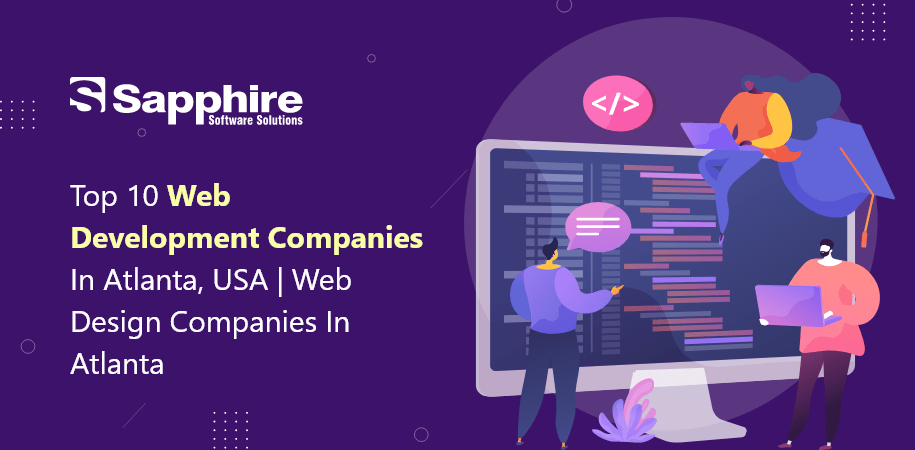
Hello Guys!!!
Today, we are going to discuss the best web development companies in Atlanta.
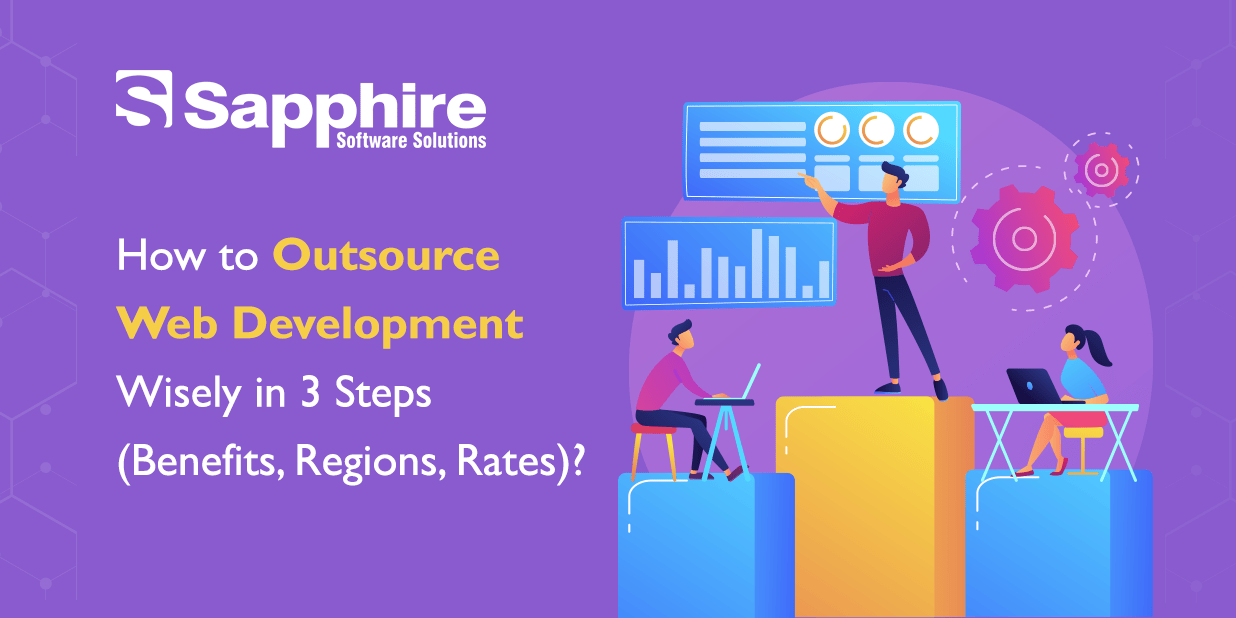
Companies have the option to assign as much or as little control over the development process to an independently managed service when outsourcing their web development. Staff augmentation, specialist teams, and full outsourcing are a few instances of web development company in USA.
Outsourcing means hiring a company to create and develop websites for you. Outsourcing web development is frequently the best option if you want to make sure your website is optimized for traffic and conversions. By having seasoned experts on your side who are conversant with industry best practices, outsourcing also helps shield you against hazards like technical debt. For companies of all sizes, outsourcing web development significantly reduces the burden of building or enhancing their online presence.
Hiring and managing an in-house team for web development is not an easy task. Creating and keeping up a great website takes a significant time, money, and skill commitment. Regular maintenance is necessary for even the most magnificent towers. To make sure your website is flawless, your outsourced team frequently offers continuous support and updates.
Here’s where outsourcing web development in 2024 might really make a big difference for your company.
Your technology partner will take care of the development and keep you updated, allowing you to concentrate on other important duties.
Hiring, onboarding, and training an internal team, as well as paying for their workspace and supplies, would have taken time and money that can be saved when you outsource to a premier web development business. It will increase their competitiveness and overall efficiency by allocating resources strategically.
Outsourcing web development can significantly reduce project timelines. With teams operating across different time zones, work can progress around the clock, expediting development. This time efficiency is especially valuable when businesses need to meet tight deadlines or launch products quickly.
We’ll look at the three simple steps to outsourcing web development tasks in this blog post.
If you have the funds available, you should think about assembling a team in addition to outsourcing your web development work. Having a budget, nevertheless, does not always mean you have to pay for it out of yourself.
Avoiding going with the person that gives you the best deal might be beneficial. Likewise, the last thing you want is to overpay for services that you really don’t require. A large and varied skill pool is made available through outsourcing.
Companies can select workers by hand who possess certain knowledge and abilities, guaranteeing the correct people are working on the project. This injection of expertise from throughout the world frequently results in the development of creative and high-caliber solutions.
Unmatched flexibility in resource scaling up or down in response to project requirements is provided by outsourcing. Additionally, the cultural compatibility and time zone proximity to Western Europe makes communication smoother.
Asian nations with a strong presence in the outsourcing sector include Vietnam, the Philippines, and India. These areas provide competitive prices along with a huge pool of highly skilled developers. Businesses, however, may face difficulties with respect to time zone variations and cultural quirks.
Due to technical advances, Eastern Asia, China and South Korea are becoming outsourcing destinations. These nations provide competitive rates and a fast-growing IT sector. Language and cultural barriers need to be overcome.
Businesses should take into account factors including business climate, language proficiency, cultural alignment, and time zone compatibility while outsourcing.
Comprehending web development charges is essential for outsourcing contract negotiations and budgeting.
The following are essential factors to understand when analyzing web development rates:
Because of the increased cost of living in certain areas, rates are higher. These markets offer consistent, reliable, industry-standard connectivity at a high caliber. Consequently, businesses think highly of them. These higher rates must be factored into budgets for outsourcing to Western Europe or North America.
Cost and quality are frequently balanced in rates in Latin American and Eastern European nations. These areas provide competitive rates and a rising talent pool. Compared to Western Europe, Eastern European countries offer superior work at more affordable rates.
In India, the Philippines, and Vietnam, reasonably priced solutions are commonplace. These locations are chosen by businesses on a tight budget because of their lower prices. An accurate assessment of job quality and excellent communication are necessary to prevent problems.
Developers might bill on an hourly or project basis. In some parts of the world, project-based prices are common, although hourly rates are typical in places like North America. A thorough understanding of the selected billing model is essential for successful project management and negotiation.
When you outsource web development projects, open communication is essential. It is important for both parties to be fully aware of the project’s objectives, deliverables, and possible extra expenses. A successful outsourcing collaboration starts with the establishment of an open and cooperative connection.
The correct web development outsourcing partner can help your company grow by offering safe, user-friendly websites that are specially designed to meet your demands. To put it briefly, businesses can acquire the resources and instruments required for success in the dynamic market of today by investing in expert web development services.
We hope you have understood how to outsource website development in less time and effort. Understanding web development rates involves considering regional variations, preferred billing models, and factors influencing pricing. If you are looking for web development outsourcing then Sapphire Software Solutions is the right destination. We communicate transparently and effectively to ensure a seamless journey. Contact us now for more information! At Sapphire Software Solutions, we have experience working with a wide range of clients, from start-ups to digital production firms. If you’d like to outsource web development services—from custom app development to UX/UX—get in touch with us.
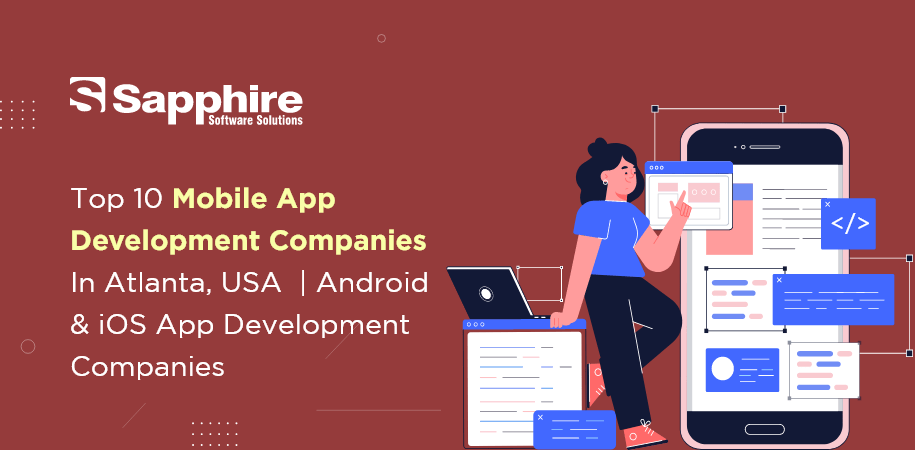
Hello Folks!!!
Today, we are going to discuss about the best mobile app development companies in Atlanta.

With the help of plugins, you can expand or add new features to your WordPress website and build almost any type of website you want, including directory sites, portfolios, and e-commerce sites. These plugins allow users to bring new functionality and modify page appearance. Hence, if you are going to hire the best WordPress Development Services, make sure you enquire about plugins you are going to use.
Wordfence Security stands out as a robust WordPress security plugin, offering a multifaceted approach to safeguarding your site. A robust firewall, malware scanner, and real-time threat defence feed provide comprehensive protection against the latest cyber threats. The plugin’s continuous monitoring and threat intelligence shields your website, making it an essential tool for users seeking a reliable security solution.
Sucuri Security is a reliable defender against website threats, offering a suite of features, including malware scanning, security activity auditing, and a robust website firewall. Its focus on malware removal and constant monitoring ensures your site remains secure. Sucuri is a valuable choice for users seeking a comprehensive security plugin with a strong emphasis on proactive measures and quick response to potential threats.
Formerly known as Better WP Security, iThemes Security is a user-friendly plugin that enhances your WordPress site’s security posture. Featuring tools such as brute force protection, file change detection, and two-factor authentication, iThemes Security offers a comprehensive yet accessible solution. The plugin’s dashboard provides a clear overview of your site’s security status, making it a suitable choice for users with varying levels of technical expertise.
This feature-rich plugin, All In One WP Security & Firewall, balances simplicity and robust security measures. Its user-friendly interface offers tools for user account security, firewall protection, and database security. The security strength meter provides users with a clear understanding of their website’s security status, encouraging continuous improvement. All In One WP Security & Firewall is an excellent choice for users seeking a comprehensive security solution focusing on user-friendly features.
Bullet Proof Security adds an extra layer of protection by securing your website’s .htaccess file. With features like a one-click setup wizard, login monitoring, and maintenance mode, the plugin offers a well-rounded approach to security. The emphasis on .htaccess security enhances overall site protection, making Bullet Proof Security a valuable tool for users looking to fortify their WordPress websites against various threats.
Cerber Security offers a comprehensive solution with brute force protection, malware scanning, and antispam functionality. The plugin’s real-time activity monitoring on the dashboard keeps users informed about potential threats, allowing for quick and effective responses. Cerber Security’s multifaceted approach makes it a robust choice for users prioritizing a well-rounded security strategy.
SecuPress Free is a user-friendly plugin that provides essential security features in an accessible manner. With features like firewall protection, malware scanning, and the ability to block suspicious IP addresses, SecuPress Free is suitable for users with varying levels of technical expertise. The plugin’s simplicity makes it an accessible option for those looking to enhance their WordPress site’s security without navigating complex settings.
Known for its ease of use and comprehensive security features, Shield Security offers a user-friendly solution for WordPress site protection. The plugin covers essential security aspects with a firewall, login protection, and audit logging. The intuitive interface makes Shield Security suitable for beginners and experienced users seeking a straightforward yet powerful security plugin.
WordPress.com’s Jetpack plugin improves security, speed, and marketing. Jetpack offers complex website administration with brute force attack defence, downtime monitoring, and secure login choices. Its extensive feature set makes it a helpful all-in-one WordPress site administration and security solution.
Anti-Malware Security and Brute-Force Firewall focus on malware detection and removal, making them vital tools for maintaining a clean and secure WordPress site. The plugin’s scanner identifies and removes known threats, and the firewall helps prevent unauthorized access. Anti-Malware Security and Brute-Force Firewall’s emphasis on proactive measures against malware makes it a valuable addition to your security toolkit.
WP fail2ban integrates with the fail2ban security service, providing an additional layer of defence against brute force attacks. Monitoring login attempts and banning suspicious IP addresses enhances your site’s protection. WP fail2ban’s integration with fail2ban adds a proactive element to your WordPress site’s security strategy, making it an excellent choice for users looking to strengthen their defences against unauthorized access.
Loginizer specializes in login protection, thwarting brute force attacks by limiting login attempts and blocking malicious IP addresses. Its user-friendly interface and customizable settings make it popular for strengthening login security. Whether you’re a beginner or an experienced user, Loginizer’s focus on login protection and simplicity makes it a valuable plugin for fortifying your WordPress site against unauthorized access.
Defender Security offers a comprehensive suite of security tools, including a malware scanner, firewall, and login security features. Regular security audits and vulnerability reports to help users proactively address potential threats. Defender Security’s multifaceted approach makes it a valuable asset for safeguarding your WordPress site against various vulnerabilities.
Shieldfy Security focuses on real-time threat detection and prevention. Offering a web application firewall, malware scanner, and continuous monitoring, the plugin takes a proactive approach to security. Shieldfy Security’s real-time threat detection capabilities make it a valuable asset for users seeking to avoid potential security risks and protect their WordPress sites against evolving threats.
Two-factor authentication adds a layer of security to your WordPress login process, and the Google Authenticator plugin makes implementation seamless. By requiring a secondary authentication method, it significantly enhances the protection of your website. WordPress users who value login security should install Google Authenticator since its two-factor authentication adds another layer of protection.
Due to increased online dangers, WordPress site security is essential. This Blog covers 15 free security plugins that protect your website from numerous threats. From firewall protection to malware scanning and login security, these plugins offer a comprehensive defence strategy. If you are looking to hire a professional WordPress Development Company in USA, we are here for you. At Sapphire, we evaluate your specific security needs and implement a combination of these plugins for a robust and layered security approach. By staying proactive and leveraging the capabilities of these plugins, our developers ensure the safety and integrity of your WordPress website. Apart from this, you can also Hire WordPress Developer in USA from us on hourly or project basis. Contact us now for more info.
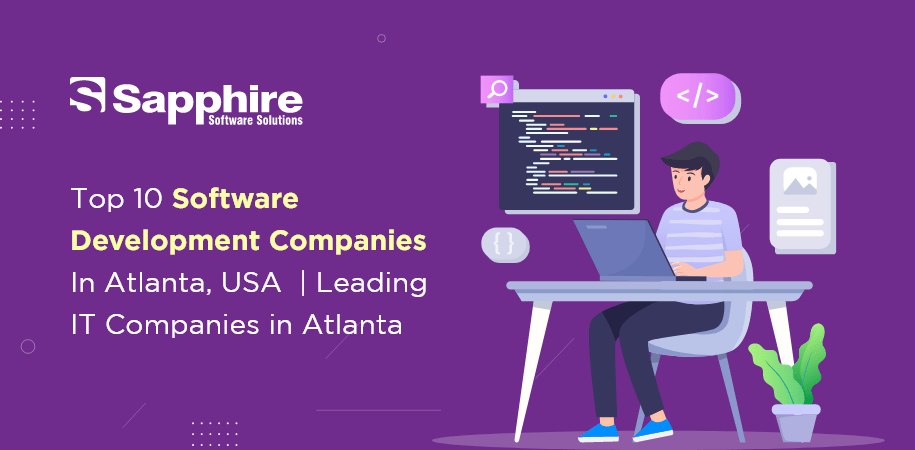
Hello Guys!!!
Today, we are going to discuss about the best software development companies in Atlanta.

Hello Guys!!!
Today, we are going to discuss about the best web development companies in Mesa.

PHP, a stalwart in server-side scripting, has long been a foundation for web applications, offering versatility and adaptability. However, as demand for quicker and more efficient apps rises, PHP code performance must be considered.
Laravel, a PHP web framework, is leading with its clean syntax, developer-friendly features, and growing ecosystem. In this research, we examine PHP’s flexibility, Laravel’s benefits, and their effects on performance.
This comprehensive blog aims to guide developers and businesses through decision-making, offering insights into project-specific considerations, performance testing, and the evolving dynamics of the PHP vs Laravel landscape in the quest for success in 2024.
As technology evolves, performance benchmarks are crucial in staying ahead of the curve. Regularly assess the latest developments, benchmarks, and community discussions surrounding PHP and Laravel. Keep an eye on advancements, optimizations, and potential performance improvements introduced by the PHP language and the Laravel framework.
In the PHP vs Laravel performance showdown for 2024 success, the choice ultimately boils down to aligning technology with project requirements and the Laravel Development Company in USA you hire. Laravel’s elegance and productivity advantages come with performance considerations, while traditional PHP provides a more customizable approach.
Before you hire PHP developers in USA, you must conduct thorough performance testing, assess project-specific needs, and consider the developer experience and scalability requirements. As a PHP Development Company in USA, we help pave the way for successful projects. We know balancing performance considerations with development efficiency and scalability to unlock the full potential of web applications in the ever-changing digital landscape.
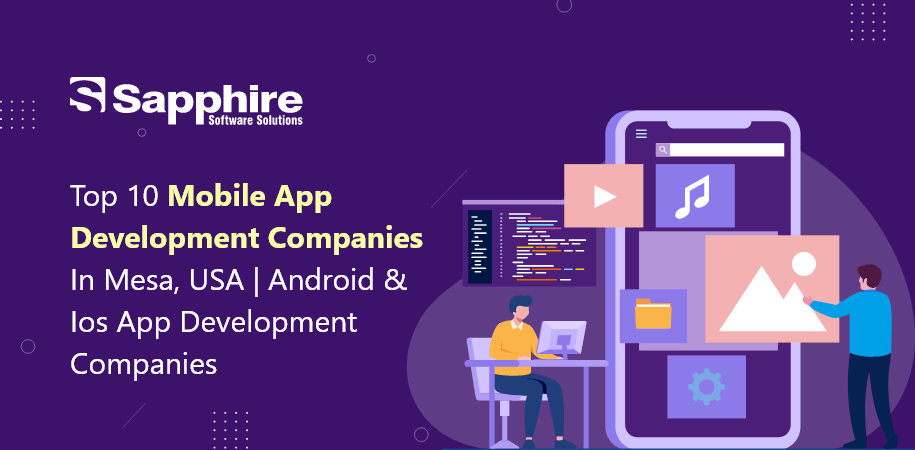
Hello Guys!!!
Today, we are going to discuss about the best mobile app development companies in Mesa.

Android dominates the mobile app development industry, which is changing quickly. As organizations seek new solutions to fulfill customer needs, on-demand Android mobile app development is crucial. This blog discusses the future of on-demand app development services and how it may help organizations adapt to new trends.
One kind of program that enables users to get in touch with appropriate companies, individuals, or vendors and take advantage of their services is on-demand software. Examples of on-demand apps include Uber, Ola, food delivery apps, Udemy etc. On-demand services have changed customer behavior. Smartphones have made people demand quick access to everything. This need is met by on-demand applications that provide food delivery, transportation, and more.
On-demand Android app development requires future-proofing tactics to stay relevant in a fast-changing industry. Businesses must look ahead to meet consumer expectations and adapt to new trends and technology.
Using cross-platform development frameworks is a future-proofing strategy. With Flutter and React Native, developers can design applications that work on Android and iOS. This lowers development costs, time-to-market, and market coverage. By expanding their audience, businesses may protect their applications from platform popularity and user preferences.
To future-proof on-demand Android apps, integration of emerging technologies is paramount. Incorporating AI algorithms for personalized recommendations, integrating AR for immersive interactions, and leveraging IoT for real-time data insights can set businesses apart in a competitive landscape. Staying at the forefront of technological innovation ensures that an app remains relevant and appealing to users.
User experience remains a critical factor in the success of on-demand apps. Future-proofing strategies must involve a relentless focus on creating intuitive, user-friendly interfaces. Employing design thinking principles helps understand user behavior, preferences, and pain points. Regularly updating the app’s UX based on user feedback and technological advancements ensures that the app remains functional and enjoyable to use, fostering user loyalty.
On-demand services often experience fluctuating demand, making scalability a crucial consideration. Future-proofing involves designing apps with scalability, ensuring they can handle increased user activity during peak times without compromising performance. Leveraging cloud-based solutions and adopting microservices architecture enables seamless scaling, guaranteeing a positive user experience regardless of the app’s popularity.
Security concerns are ever-present in the digital landscape, and on-demand apps dealing with sensitive user data must prioritize robust security measures. Future-proofing strategies include the implementation of advanced encryption protocols, secure authentication methods, and regular security audits. Proactive measures to identify and address potential vulnerabilities ensure the trust and confidence of users, safeguarding the app’s reputation.
The on-demand sector is subject to evolving regulations, and future-proofing strategies involve staying compliant with legal requirements. Regular legal assessments and updates to app features to meet changing regulations are vital. A proactive approach to legal compliance ensures that the app can adapt to regulatory changes without disrupting its functionality or user experience.
Future-proofing is an ongoing process that requires a culture of continuous learning and adaptation. This involves staying informed about industry trends, monitoring user feedback, and being responsive to technological advancements. Agile development methodologies, frequent updates, and a commitment to innovation are essential to future-proofing strategies.
On-demand Android app development services are changing fast due to technology and user demands. An android mobile app development company must follow industry trends to be competitive and fulfil consumers’ evolving needs. Hire Android app developers from sapphire software solutions for your upcoming projects.
On-demand app development has embraced hyper-personalization as users desire more individualized experiences. Businesses may customize suggestions and services by analyzing user behavior and preferences using sophisticated analytics and AI. This improves customer happiness and brand loyalty by making the experience more relevant and engaging.
The global pandemic has accelerated the demand for contactless services, and on-demand apps are adapting accordingly. Integrating contactless payments, virtual consultations, and touchless deliveries has become crucial. Consumers now prioritize safety and hygiene, making contactless services a necessity rather than a luxury. Android app developers are pioneering these capabilities to provide a safe and smooth user experience.
With environmental consciousness on the rise, users gravitate towards businesses prioritizing sustainability. On-demand apps are incorporating eco-friendly features to align with these values. This includes offering options for eco-friendly transportation, reducing carbon footprints, and promoting paperless transactions. Integrating sustainability into the app’s core functionality attracts environmentally conscious users and contributes to the overall corporate social responsibility of businesses.
The rise of voice-activated technology has extended to on-demand apps. Voice commands enhance user accessibility, allowing them to interact with the app hands-free. Voice-activated instructions make ordering, looking for services, and navigating the app more accessible. Android app developers employ speech recognition to make their apps more user-friendly.
Augmented Reality has transcended gaming and entertainment to become a valuable asset in on-demand apps. From virtual try-ons for e-commerce platforms to AR-based navigation for delivery services, integrating AR enhances user engagement and provides a more immersive experience. Android’s robust support for AR development tools has made it a preferred platform for businesses looking to incorporate augmented reality features into their on-demand apps.
Security concerns in on-demand apps, particularly regarding user data and transactions, have led to the exploration of blockchain technology. Blockchain’s decentralized and transparent nature enhances security, ensuring the integrity and privacy of user information. Android app developers are incorporating blockchain to build trust among users by offering a secure and transparent platform for transactions and data management.
Strong security is essential for on-demand programs that handle sensitive user data. Future-proofing strategies involve the implementation of advanced encryption protocols, secure payment gateways, and regular security audits to identify and address vulnerabilities.
On-demand services often experience fluctuating demand. Developers must design apps that scale seamlessly to handle increased user activity during peak times. Cloud-based solutions and microservices architecture are instrumental in ensuring the scalability of on-demand Android apps.
The on-demand sector is subject to evolving regulations, and businesses must comply with legal requirements. Proactive measures, such as regular legal assessments and updates to app features to meet changing regulations, are vital for long-term success.
The future of on-demand Android mobile app development services holds immense potential for businesses seeking to stay ahead in the competitive digital landscape. At Sapphire, we adopt cross-platform development, integrating emerging technologies, and stay attuned to emerging trends. You can hire from our pool of on-demand Android app developers to stay relevant and thrive in the on-demand economy.
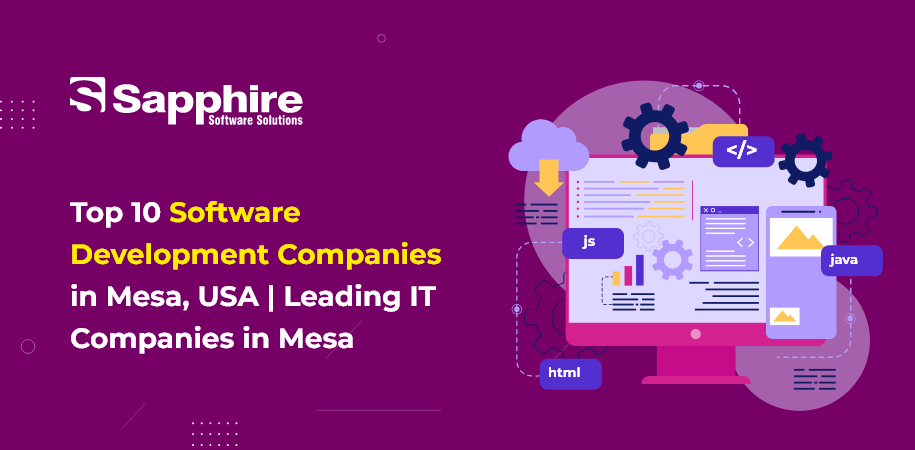
Hello Guys!!!
Today, we are going to discuss about the best software development companies in Mesa.
